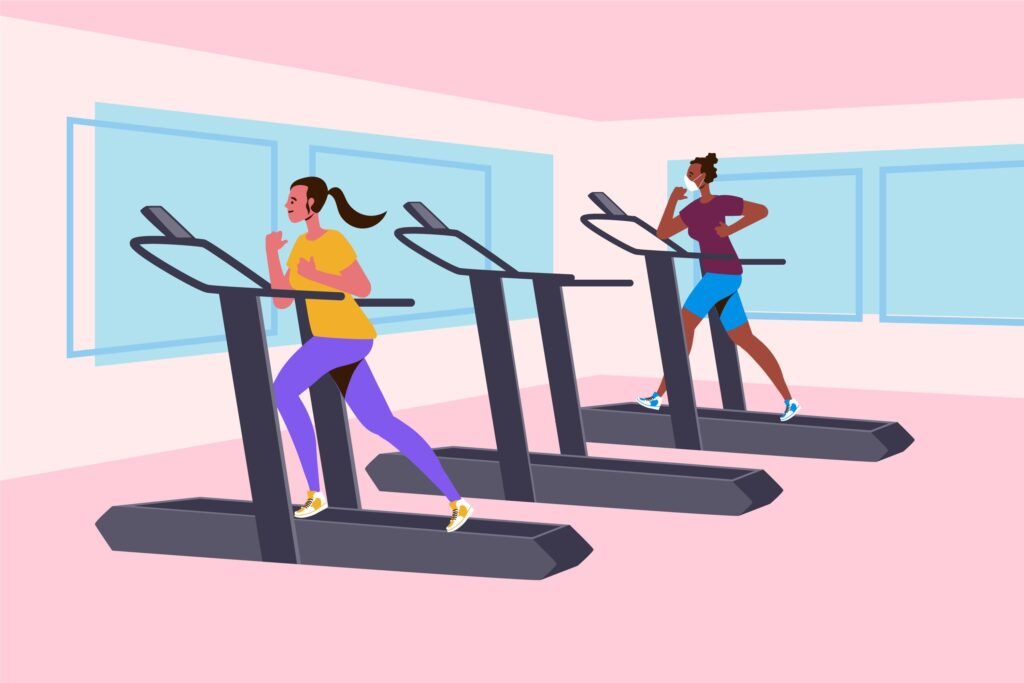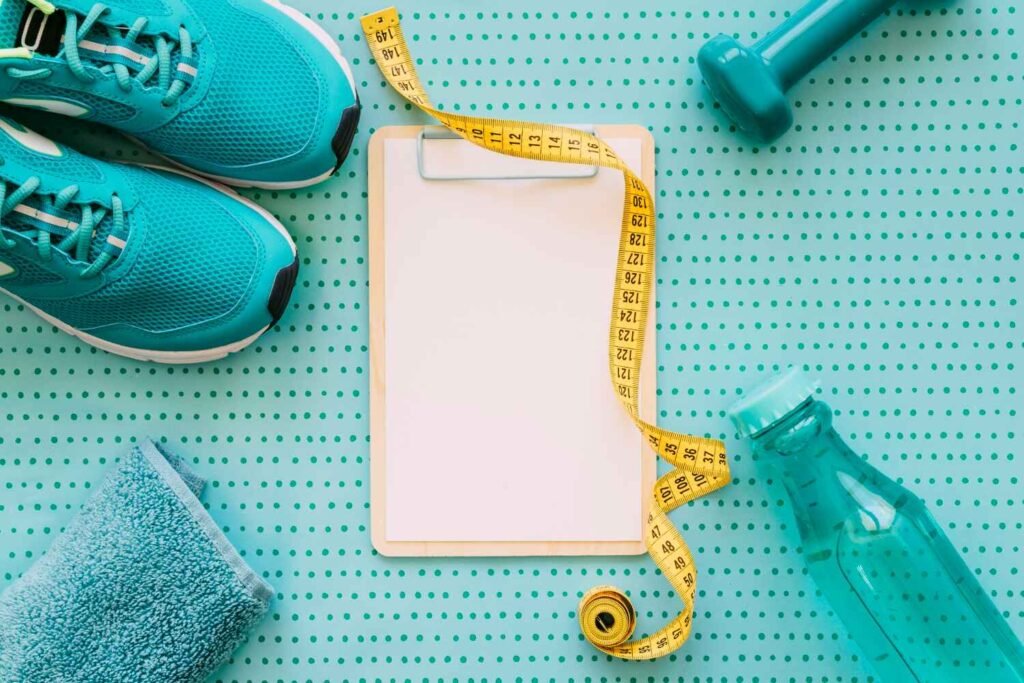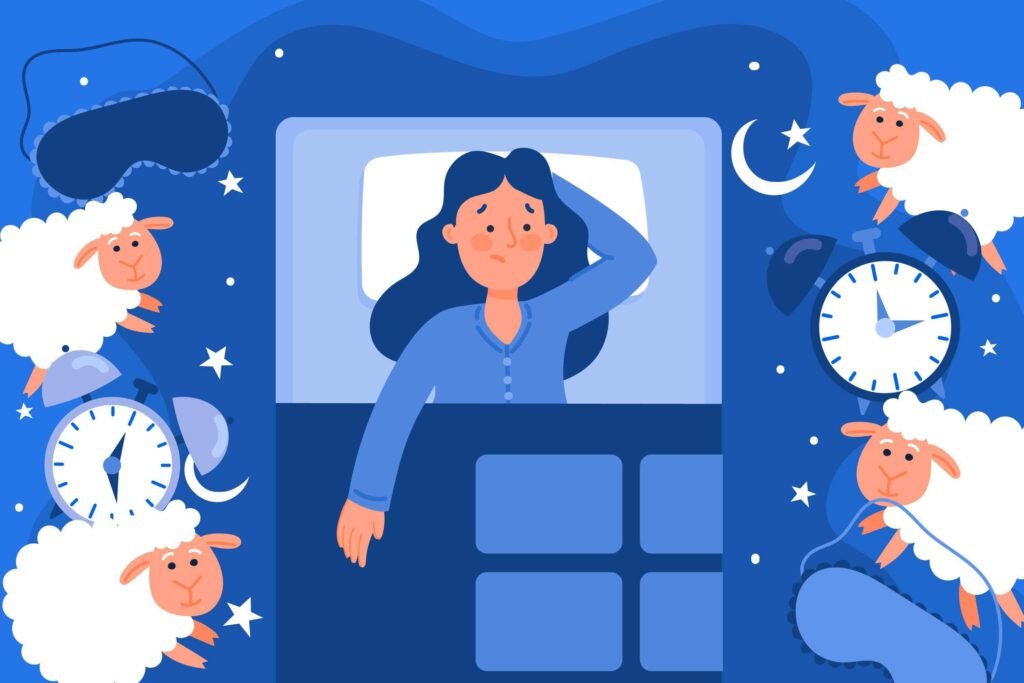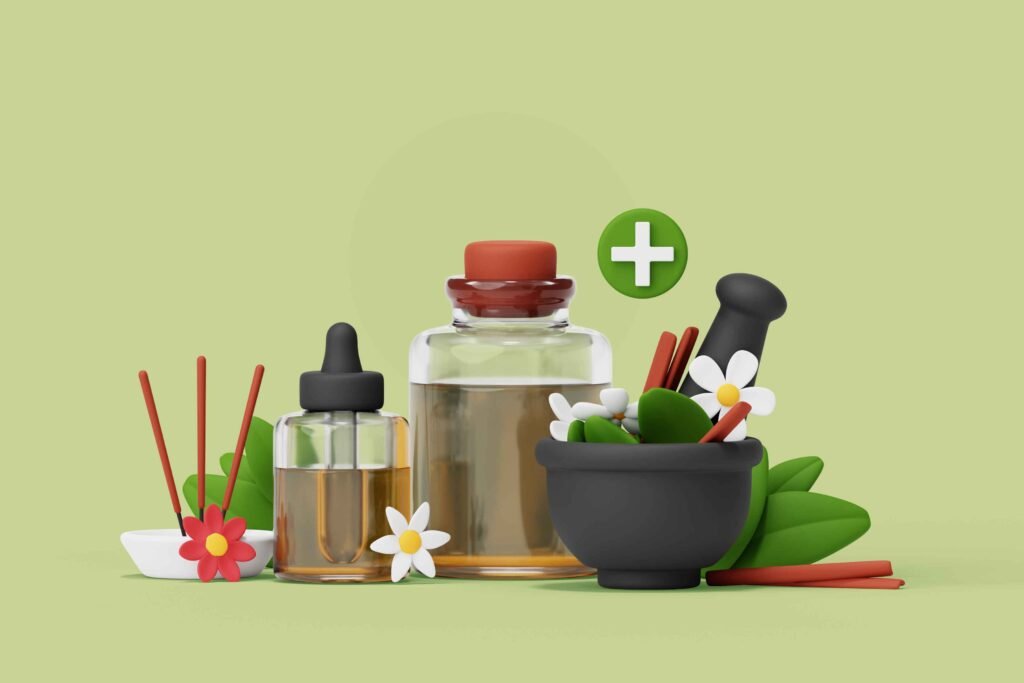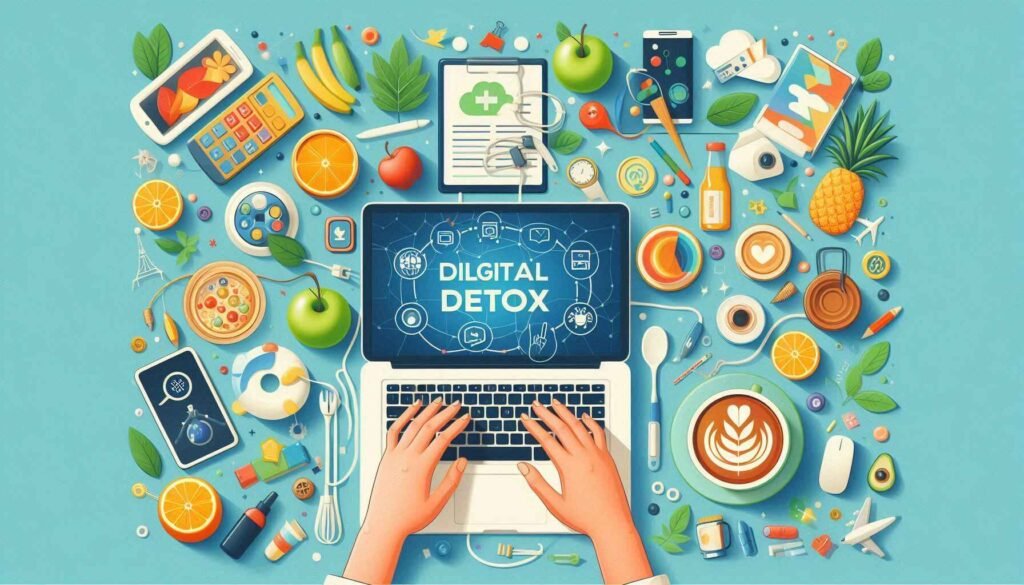
The Benefits of Digital Detox: How to Unplug for Better Wellbeing
In today’s world, digital devices have almost become an extra limb. We’re constantly connected, checking notifications, responding to emails, and scrolling through endless social media feeds. While digital access has its benefits, the constant screen exposure can negatively impact both mental and physical health. If you’ve ever felt drained after a day filled with screen time, it might be time to consider a digital detox. In simple terms, a digital detox—or taking a break from screens—can help reset the mind, reduce stress, and foster a better sense of well-being.
What is a Digital Detox? Understanding the Concept
A digital detox involves taking a deliberate break from digital devices, such as smartphones, computers, and tablets. Importantly, this doesn’t mean completely eliminating technology forever; even short breaks can make a significant difference. The main purpose of a digital detox is to step back from the digital world to reconnect with yourself, others, and the physical environment around you. By taking time away from screens, you allow your mind to relax, recharge, and engage in offline activities that can boost your overall health.
Why a Digital Detox is Essential in Today’s Digital Age
Most people now spend an average of over seven hours a day online, much of it on social media and other screen-based activities. This constant connectivity can be exhausting, leading to what some experts call “digital burnout.” Excessive screen time often causes mental fatigue, higher levels of anxiety, and ultimately a decrease in life satisfaction. Therefore, a digital detox provides a break from this ongoing stimulation, giving your mind a chance to refresh and regain focus.
The Hidden Health Effects of Digital Overload
While it may seem harmless, prolonged screen time can have significant health consequences. Here are some ways that digital overload impacts both physical and mental health:
Mental Health Challenges
Spending hours on social media can lead to comparison and feelings of inadequacy. When we’re constantly exposed to idealized versions of others’ lives, it’s easy to feel like we’re falling short. In fact, studies show a link between prolonged social media use and higher rates of depression, anxiety, and stress.
Sleep Disruption
The blue light from screens interferes with melatonin production, the hormone responsible for regulating sleep. Using devices before bed can make it harder to fall asleep, resulting in poorer sleep quality and making you feel groggy in the morning.
Reduced Productivity
Frequent notifications and the urge to check devices can significantly disrupt focus, leading to reduced productivity. These digital distractions make it challenging to stay on task and complete projects efficiently.
Physical Discomfort
Extended screen time can lead to digital eye strain, which causes symptoms like dry eyes, headaches, and blurred vision. Additionally, sitting in front of screens for long periods can contribute to physical discomfort, such as neck, back, and shoulder pain.
Top Benefits of Taking a Digital Detox
Even a short digital detox can bring positive changes to your life. Here are some key benefits:
Enhanced Mental Clarity and Focus
Unplugging reduces the constant influx of information that can clog the mind. Without distractions, you can think more clearly, focus better, and make decisions more effectively.
Improved Sleep Quality
Avoiding screens a few hours before bed helps restore the body’s natural sleep cycle. By reducing blue light exposure, you allow your body to produce melatonin naturally, which leads to deeper and more restorative sleep.
Better Relationships and Social Interactions
Without screens, you become more present in the moment and available to those around you. Whether you’re spending quality time with family or friends, a digital detox helps build stronger connections and fosters meaningful relationships.
Boosted Productivity and Creativity
By eliminating distractions, a digital detox allows you to focus on tasks without interruptions. With fewer digital diversions, it’s easier to tap into creativity and work more efficiently.
Greater Self-Awareness and Mindfulness
Stepping away from screens gives you the opportunity to reflect on your thoughts and emotions. You’ll likely find it easier to recognize your feelings and address your needs, whether that involves engaging in a relaxing activity or practicing mindfulness.
How to Get Started with Your Own Digital Detox
If you’re ready to try a digital detox, it doesn’t mean you have to disconnect completely. Here are some practical steps to ease into a healthier relationship with technology:
Set Clear Goals and Intentions
Think about why you want to do a digital detox. Are you aiming to reduce stress, improve your sleep, or spend more time with loved ones? Setting specific goals will keep you motivated and make the experience more fulfilling.
Establish Boundaries for Screen Time
Decide on certain times or situations where you won’t use digital devices. For example, you might set rules to avoid screens during meals, an hour before bed, or while spending time outside. These boundaries can help you disconnect while still staying informed.
Inform Friends and Family
Let those close to you know about your digital detox. This way, they’ll understand why you might not respond immediately and may even join you in unplugging for a while.
Find Offline Activities You Enjoy
Fill the time you’d typically spend online with activities that bring you joy. Consider picking up a hobby, reading a book, going for a walk, or practicing mindfulness. Engaging in these activities helps keep your mind and body active, reducing the temptation to check your phone.
Overcoming Common Digital Detox Challenges
For many, the idea of unplugging can feel intimidating. Here are some tips to overcome common challenges:
Coping with FOMO (Fear of Missing Out)
One of the biggest hurdles of a digital detox is FOMO, the fear of missing important updates or messages. Remind yourself that taking time for yourself is essential and that the digital world will still be there when you return. Embrace the peace that comes from being offline, even if just for a while.
Dealing with Boredom
Without constant access to entertainment, boredom may initially set in. Planning engaging offline activities, such as exploring a new hobby, can help make the transition smoother and more enjoyable.
Handling Social Pressure
Sometimes, friends or coworkers might expect instant replies. By informing them in advance, you can reduce this pressure and set mutual expectations for communication during your detox.
Examples of Digital Detox Success Stories
To truly appreciate the power of a digital detox, it can help to look at real-life stories of people who have integrated it into their lives. These examples show that unplugging can lead to profound improvements in mental clarity, relationships, and overall well-being.
A Family Bonding Experience
One family decided to try a week-long digital detox as a way to reconnect. Initially, the children were resistant, worried they’d be “out of the loop” with friends. However, as the week went on, they began to engage in more outdoor activities, played board games, and shared uninterrupted conversations. By the end of the week, the family felt closer, and the children noticed they were more present with each other. This experience encouraged them to set weekly screen-free days to keep their family bonds strong.
A Career-Boosting Move
A marketing professional noticed her productivity was slipping due to constant email and social media checks. She decided to set “device-free” hours each day, focusing solely on her tasks without digital distractions. Not only did her productivity soar, but she also felt less stressed and more energized. This shift led to an improvement in her work performance, helping her gain recognition for her efficiency and dedication.
A Mental Health Reset
A college student, struggling with anxiety and self-esteem issues from social media use, committed to a month-long digital detox. By disconnecting, she reduced the urge to compare herself to others online. This break led to noticeable improvements in her mental health and self-confidence, and she now schedules regular “social media breaks” to maintain a balanced mindset.
How to Maintain a Healthy Relationship with Technology After a Digital Detox
Completing a digital detox is an achievement, but to reap long-term benefits, it’s essential to establish sustainable habits that keep digital use in check. Here’s how you can maintain a healthier relationship with technology:
Set Regular Screen-Free Times
Build a habit of device-free moments throughout your day. This could be during meals, mornings, or before bed. These intentional breaks allow you to reconnect with yourself and those around you, providing mental clarity and stress relief.
Use Technology with Purpose
When you’re online, make sure you’re using technology intentionally. Avoid mindlessly scrolling or getting trapped in endless notifications. Set specific times for checking social media, emails, or messages, and stick to that schedule to stay focused and avoid overuse.
Limit Social Media Use
Social media is one of the biggest contributors to digital overload. To prevent it from consuming too much time and energy, set daily limits for social media use. Many smartphones have built-in features to monitor and restrict usage, making it easy to stay accountable.
Prioritize Offline Activities
Engage more in offline activities like reading, exercising, or spending time in nature. Doing so reinforces the idea that you don’t need constant connectivity to enjoy life, helping you find joy in the present moment.
Track Your Digital Habits
Keeping track of your screen time is the first step toward managing it. Observe how much time you spend on each app or platform, and adjust if you notice certain apps taking up too much time. Reflecting on your habits can help you make conscious choices that support your well-being.
Additional Tips for a Successful Digital Detox
If you’re planning a digital detox, here are some extra tips to make the experience smoother and more rewarding:
Choose a Detox Duration That Fits Your Needs
Start with a short detox, like a weekend or a single day, if you’re new to the experience. This way, you can ease into it without feeling overwhelmed. Once you’re comfortable, try extending the detox or scheduling regular breaks.
Create a Digital Detox Plan
Going in with a plan can make a big difference. Outline what you want to achieve and set specific goals, such as spending quality time with family or completing a creative project. Having a plan helps you stay focused and ensures that your time is well-spent.
Prepare for Potential Setbacks
Expect that there may be times when you feel the urge to check your phone or log onto social media. Anticipate these moments and prepare strategies, like doing a quick exercise, practicing breathing techniques, or switching to a different activity to distract yourself.
Reward Yourself for Sticking to the Detox
Celebrate your efforts and reward yourself for successfully completing the detox. Treat yourself to something enjoyable, like a special meal, a spa day, or a new book. Recognizing your success reinforces the positive experience and can motivate you to make digital detoxes a regular habit.
Find Support from Others
If you think going it alone might be difficult, consider inviting a friend or family member to join you in the detox. This shared experience can provide accountability and make it easier to stay committed, especially when you can encourage each other along the way.
How to Incorporate Regular Digital Detoxes Into Your Routine
Now that we’ve explored the benefits of a digital detox, the next step is learning how to make it part of your regular routine. By turning digital detoxes into a habit, you can maintain a healthier relationship with technology and safeguard your mental and physical well-being. Here are some practical strategies to help you integrate detoxes into your daily life without feeling cut off from digital connections.
Start with a Weekly Digital-Free Day
Consider dedicating one day a week as your “digital-free day.” Use this day to completely disconnect from non-essential digital devices and focus on spending time with loved ones, enjoying outdoor activities, or simply relaxing without digital distractions. Many people find that scheduling a weekly detox day not only helps them recharge but also improves their mood and productivity throughout the week.
Set Aside Daily Digital-Free Hours
Incorporating digital-free hours into your daily routine is an easy way to detox without feeling overwhelmed. Start by choosing a specific time, such as mornings or evenings, when you’ll avoid screens. This is particularly helpful before bedtime, as reducing blue light exposure can improve sleep quality and make it easier to fall asleep naturally.
Establish Boundaries Around Specific Activities
Another effective strategy is to set boundaries around certain activities. For instance, you might decide to keep your phone out of reach during meals, family gatherings, or exercise sessions. These small but meaningful boundaries encourage a mindful approach to digital use, ensuring that you’re present and engaged in each moment without digital interference.
Practice Mindful Technology Use
Instead of eliminating digital devices entirely, practice using them mindfully. This means interacting with your devices with a clear purpose rather than engaging in mindless scrolling or constant app-checking. By being intentional, you can reduce wasted time and focus on activities that add genuine value to your life.
Building a Supportive Environment for Digital Detox
Creating an environment that supports digital detoxing is essential for long-term success. By setting up your space to encourage reduced screen time, you make it easier to stick to your goals. Here are some tips for creating a detox-friendly environment:
Designate Screen-Free Zones in Your Home
Consider designating specific areas in your home as screen-free zones, such as the dining room, bedroom, or living room. This physical separation between screens and relaxation spaces helps reinforce boundaries and reduces the temptation to check devices during meals, unwinding time, or before bed.
Involve Family and Friends in Your Detox
Doing a digital detox with family or friends can boost accountability and make the experience more enjoyable. Plan screen-free activities together, like going for a hike, playing board games, or preparing a meal. Sharing these experiences can help you all disconnect together while fostering deeper connections.
Limit Device Use in Public Spaces
Set a personal rule to limit digital use in public places, such as cafes, parks, or while commuting. This simple adjustment can help you stay present in your surroundings and even lead to spontaneous social interactions, enriching your experience of public spaces.
Choose Fulfilling Offline Hobbies
Engaging in offline hobbies like reading, painting, gardening, or sports provides a fun and productive way to spend time without screens. By pursuing activities you genuinely enjoy, you’ll feel less inclined to reach for your devices and more fulfilled by your offline experiences.
Reflecting on the Benefits of a Digital Detox
After completing a digital detox, take some time to reflect on your experience. Assessing how the detox affected your mood, productivity, and relationships can help you understand its benefits and motivate you to continue. Here’s how to effectively reflect on your detox:
Journal About Your Experience
Writing down your thoughts and feelings after a detox can be a therapeutic way to process the experience. Reflect on moments that brought joy or relief, as well as any challenges you faced. Journaling can help you appreciate the positive impact of unplugging and inspire you to keep going.
Evaluate Productivity and Focus Improvements
Notice any improvements in focus and productivity after the detox. Did you accomplish more in a shorter amount of time? Were you able to concentrate more deeply without the pull of notifications? Recognizing these gains can encourage you to limit screen time daily.
Assess Your Relationships and Social Interactions
Consider how the detox impacted your interactions with loved ones. Did you feel more connected and present during conversations? Were you able to enjoy meaningful activities together without the distraction of devices? Observing these changes reinforces the value of unplugging for strengthening relationships.
Monitor Your Mood and Stress Levels
A successful digital detox can often reduce stress and anxiety. Take note of how you felt mentally and emotionally during and after the detox. If you experienced a sense of calm or positivity, it’s a good sign that regular detoxes are beneficial for your mental health.
Making Digital Wellness a Lifelong Commitment
Embracing digital wellness isn’t a one-time event; it’s an ongoing commitment to balance in our tech-driven world. To keep reaping the benefits of digital detoxing, aim to incorporate digital wellness practices into your lifestyle. Here are some ideas to make digital wellness a lasting habit:
Stay Informed About Digital Wellness Trends
As technology evolves, so do the practices for managing digital wellness. Stay updated on new tools, research, and strategies for a healthier digital lifestyle. Following digital wellness advocates or reading up on tech balance can give you fresh ideas and keep you motivated.
Practice Gratitude for Offline Moments
Regularly express gratitude for your offline moments, whether it’s a peaceful morning coffee, a walk in the park, or quality time with family. Recognizing the joy of these moments can shift your focus from digital content to real-life experiences, making it easier to embrace screen-free time.
Continuously Set Digital Boundaries
As life changes, so will your digital needs. Periodically reevaluate and adjust your digital boundaries to ensure they still support your goals. For example, you may need stricter boundaries during busy times or more flexibility when life slows down.
Foster a Balanced Digital Culture
Share your digital wellness journey with others, encouraging a balanced approach to technology among friends, family, and colleagues. Leading by example and promoting mindful digital use can contribute to a healthier, more connected community.
Final Thoughts: Embracing the Freedom of Unplugging
A digital detox isn’t just a temporary break from technology; it’s a chance to reconnect with what truly matters in life. In a world where screens are always within reach, taking intentional breaks can be both empowering and refreshing. By prioritizing offline moments, you’ll gain mental clarity, reduce stress, and deepen your relationships.
Whether through weekly digital-free days, mindful screen use, or daily digital-free hours, find a balance that works best for you. A digital detox gives you the freedom to focus on what matters most and to live fully in each moment.
So, give yourself permission to unplug, recharge, and discover the beauty of a life less connected to screens. Embrace digital wellness as a lifelong commitment, and enjoy the lasting benefits of a balanced, mindful relationship with technology.
